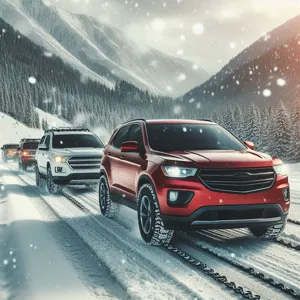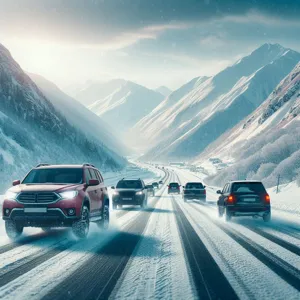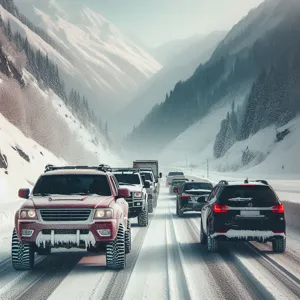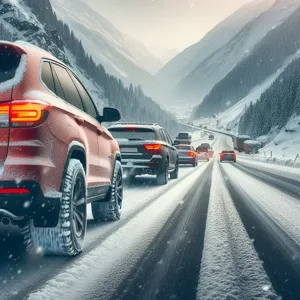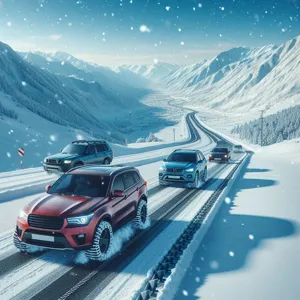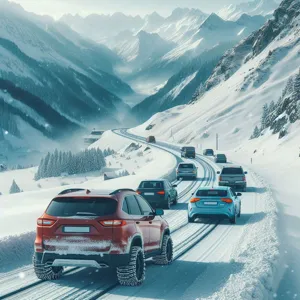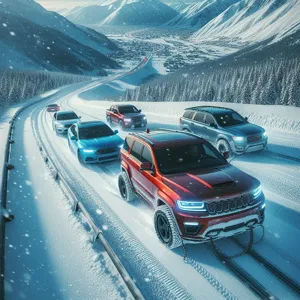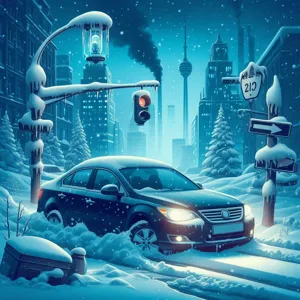Owning a car is a significant responsibility that extends far beyond the thrill of hitting the open road.
To ensure your vehicle remains reliable and safe throughout the year, mastering car maintenance is essential. Each season brings its own unique challenges, from blistering summer heat that can strain your engine to frigid winter temperatures that demand extra care for your battery and tires. In this comprehensive guide, we’ll explore essential car maintenance tips tailored for every season, empowering you with the knowledge to keep your vehicle in peak condition. Whether you’re a seasoned car enthusiast or a first-time car owner, our expert insights will help you navigate seasonal changes, prevent costly repairs, and ultimately enhance the longevity and performance of your beloved ride. Buckle up as we delve into the must-know strategies that will make car maintenance a breeze, no matter the weather!
1. Introduction to Car Maintenance

Car maintenance is not just a routine chore; it’s an essential practice that ensures your vehicle operates smoothly and safely throughout its lifespan. As the lifeblood of your daily commute, your car is subjected to various stresses, from fluctuating weather conditions to the wear and tear of everyday use. Understanding the fundamentals of car maintenance can save you from unexpected breakdowns, costly repairs, and even accidents down the line.
In this guide, we’ll explore the importance of regular maintenance, emphasizing how simple, proactive measures can lead to a more reliable driving experience. Whether you’re a seasoned car enthusiast or a new driver still finding your way, mastering the art of car maintenance can empower you to take control of your vehicle’s health.
From oil changes to tire rotations and everything in between, we’ll cover the essential tasks tailored for every season. Each season brings unique challenges and conditions that can impact your car’s performance—summer heat, winter snow, spring rains, and autumn leaves. By adapting your maintenance routine to the changing seasons, you can ensure that your car remains in peak condition, ready to tackle whatever the road throws your way. Join us as we delve into this vital aspect of vehicle ownership, equipping you with the knowledge and confidence to keep your car running like new.
2. Importance of Seasonal Maintenance Checks
When it comes to car maintenance, seasonal checks are not just another item on your to-do list—they are vital to ensuring your vehicle operates smoothly and safely throughout the year. Each season brings its own set of challenges and demands, affecting everything from tire performance to engine efficiency. By conducting thorough maintenance checks at the change of seasons, you can preemptively address potential issues and adapt your vehicle for the specific conditions ahead.
In the spring, for instance, as the weather warms up, it’s crucial to inspect your tires for wear and ensure they are properly inflated. This is also the ideal time to check your windshield wipers and fluid levels, as spring showers can obscure visibility. Transitioning into summer, overheating becomes a concern. A coolant flush and a thorough inspection of your cooling system will help prevent breakdowns during the hottest months.
As autumn arrives, it’s time to prepare your vehicle for the cold ahead. This includes checking your battery’s health, as battery performance can diminish in lower temperatures. Additionally, inspecting your brakes and ensuring your antifreeze levels are adequate will keep you safe as the roads become slick and icy.
Finally, winter demands a comprehensive approach to maintenance. Switching to winter tires can provide better traction on snow and ice, while checking your heater and defroster will ensure comfort and safety during frigid drives.
By making seasonal maintenance checks a priority, you not only enhance your vehicle’s longevity but also ensure the safety of yourself and your passengers. Each season brings unique challenges, and addressing them head-on will keep your car running at its best no matter what Mother Nature throws your way.
3. Winter Prep: Keeping Your Car Safe in Cold Weather
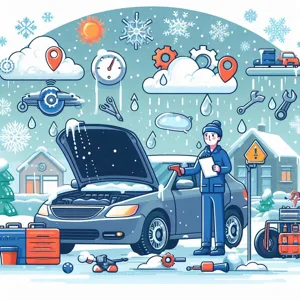
As the vibrant colors of autumn fade and the chill of winter sets in, ensuring your vehicle is ready for the harsher conditions ahead becomes paramount. Winter prep isn’t just about a warm coat for yourself; it’s about equipping your car to handle the challenges of snow, ice, and freezing temperatures.
Start with your tires—arguably the most critical component when it comes to winter driving. Consider investing in a set of winter tires, which are specifically designed to provide better traction on icy and snow-covered roads. These tires remain flexible in cold temperatures, offering improved grip compared to all-season tires. Don’t forget to check the tire pressure regularly, as it can drop with the temperature, leading to reduced performance and safety.
Next, take a close look at your battery. Cold weather can be particularly hard on batteries, causing them to lose their charge more quickly. If your battery is more than three years old, it’s wise to have it tested to ensure it can handle the demands of winter driving. Clean any corrosion from the terminals and make sure all connections are secure.
Additionally, don’t ignore your windshield wipers and fluids. Replace any worn wiper blades and fill up on windshield washer fluid that is specifically formulated for winter use. This helps maintain visibility during snowstorms and when roads are slushy.
Lastly, keep an emergency kit in your car that includes essentials like blankets, a flashlight, a first-aid kit, and non-perishable snacks. A shovel, ice scraper, and sand or kitty litter can also be invaluable should you find yourself stuck in snow.
By taking these proactive steps, you’ll ensure that your vehicle is not just ready for winter, but that you can navigate the season with confidence and peace of mind. Winter prep is all about preparation and awareness, so don’t wait until the first snowfall to get started!
4. Spring Tune-Up: Refreshing Your Vehicle After Winter
As winter recedes and the days grow longer, it’s time to give your vehicle the rejuvenating spring tune-up it deserves. After months of harsh weather, road salt, and frigid temperatures, your car may be feeling a little worse for wear. A thorough spring maintenance check not only revitalizes your vehicle but also ensures it’s ready to handle the demands of warmer driving conditions.
Start with a comprehensive inspection of your vehicle’s exterior. The winter months can leave behind a residue of salt and grime, which can corrode metal surfaces and damage the paint. Give your car a thorough wash, paying special attention to the undercarriage, where salt accumulation can lead to rusting. Once clean, consider applying a protective wax to shield your vehicle from spring showers and UV rays.
Next, turn your focus to the engine. Winter can be tough on your battery, so check for any signs of corrosion and ensure it has a strong charge. A fluid check is equally vital; top off your oil, coolant, and windshield washer fluid as needed. This is also the perfect time to replace your oil and oil filter, ensuring your engine runs smoothly as the temperatures rise.
Don’t overlook your tires, either. As the weather changes, so do the road conditions. Inspect your tires for wear and tear, and ensure they are properly inflated for optimal performance. If you’ve switched to winter tires, now is the time to swap them out for your all-season or summer tires, enhancing your car’s grip and handling as you navigate spring’s unpredictable weather.
Finally, give your brakes some attention. Listen for any unusual sounds or vibrations, and consider having a professional check their condition. The last thing you want is to compromise your safety as you embark on spring road trips and adventures.
By investing a little time and effort into a spring tune-up, you’ll not only refresh your vehicle but also extend its lifespan and enhance its performance. Embrace the season with confidence, knowing your car is in top shape for all the journeys ahead!
5. Summer Care: Protecting Your Car from Heat and UV Damage
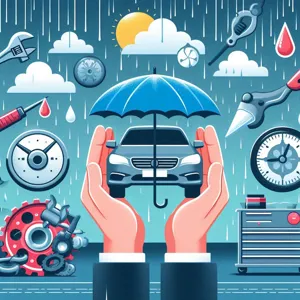
As the summer sun beats down, it’s crucial to give your car some extra love and attention to protect it from the harsh elements of heat and UV rays. The soaring temperatures can wreak havoc on various components of your vehicle, so implementing a summer care routine will ensure your car remains in peak condition.
Start with the exterior; the sun’s UV rays can cause paint to fade and deteriorate, making your once vibrant car look dull. Consider applying a high-quality wax or sealant to create a protective barrier against the sun. This not only enhances your car’s shine but also helps to guard against harmful UV rays. Regularly washing your car is essential as well; a clean surface prevents dirt and grime from accumulating, which can scratch the paint and lead to further damage when exposed to intense sunlight.
Next, don’t overlook the importance of your tires. The heat can cause tire pressure to rise, leading to potential blowouts. Check your tire pressure regularly, ensuring it’s at the recommended levels, and inspect for any signs of wear or damage. Additionally, consider rotating your tires more frequently during the summer months to ensure even wear, especially if you plan to take long road trips.
Moving to the interior, protect your car’s upholstery from sun damage by using sunshades in the front and rear windows when parked. This simple step can significantly reduce the temperature inside your vehicle and prevent cracking and fading of your dashboard and seats. If possible, park in shaded areas or use a car cover to shield your car from direct sunlight.
Finally, don’t forget about your engine. High temperatures can lead to overheating, so checking your coolant levels is vital. Make sure that your cooling system is functioning optimally to avoid any costly repairs down the road. Regularly flush and replace the coolant as needed, and inspect belts and hoses for wear, as these can become brittle and cracked in extreme heat.
By taking these proactive steps, you’ll not only extend the life of your car but also enhance its appearance and performance throughout the summer months. A little effort goes a long way in safeguarding your vehicle against the sun’s relentless rays, ensuring that it remains your reliable companion on all your summer adventures.
6. Fall Check-Up: Preparing for Rain and Slippery Roads
As the vibrant hues of summer begin to fade and the air turns crisp, it’s time to shift gears and prepare your vehicle for the challenges that fall brings. With the arrival of rain-soaked roads and the potential for slippery conditions, a thorough check-up is essential to ensure your car is ready to handle the season’s unpredictability.
Start with your tires, as they are your first line of defense against wet pavement. Check the tread depth; a minimum of 2/32 of an inch is crucial for maintaining traction. Consider rotating your tires and ensuring they are properly inflated, as cold temperatures can lead to decreased tire pressure. If you live in an area prone to heavy rainfall, investing in tires designed for wet conditions can provide added safety and performance.
Next, turn your attention to your brakes. The autumn months can bring an increase in unpredictable weather, including sudden rainstorms. Ensure your brake pads are in good condition, and check for any signs of wear or unevenness. If your brakes are squeaking or the pedal feels soft, it may be time for a professional inspection.
Don’t forget to inspect your windshield wipers and fluid levels. Replacing worn wiper blades is a simple yet effective way to maintain visibility during downpours. Fill your windshield washer reservoir with a quality fluid that can tackle both dirt and grime, ensuring you can clear your view at a moment’s notice.
Lastly, pay attention to your car’s lights. Shorter days mean you’ll be relying more on your headlights. Check that all your lights are functioning properly, including brake lights and turn signals, to ensure you can see and be seen during those early evening drives.
By taking these proactive steps to prepare your vehicle for the fall, you can navigate rainy and slippery roads with confidence, ensuring a safer and more enjoyable driving experience as the seasons change.
7. Essential Fluids: Checking and Replacing Oil, Coolant, and Brake Fluid

Maintaining your vehicle’s essential fluids is like giving it a lifeline, ensuring it runs smoothly and efficiently through every season. Regularly checking and replacing oil, coolant, and brake fluid is not just a routine task; it’s a vital aspect of car care that can prevent significant and costly issues down the road.
**Oil** is the lifeblood of your engine. It lubricates the moving parts, reduces friction, and helps keep the temperature down. Over time, oil can become dirty and lose its effectiveness, leading to increased wear and tear on your engine. To keep your vehicle in top shape, check the oil level monthly and look for any changes in color or consistency. A healthy oil should be amber and slick, while dark or gritty oil indicates that it’s time for a change. Most vehicles require an oil change every 3,000 to 5,000 miles, but always refer to your owner’s manual for the specific recommendations for your car.
**Coolant**, or antifreeze, plays a crucial role in regulating your engine’s temperature, especially during the extremes of summer and winter. A well-functioning cooling system prevents overheating and enhances performance. To check your coolant levels, locate the reservoir in your engine bay and ensure it sits between the minimum and maximum markers. If it’s low, top it off with a mixture of coolant and water as specified in your manual. Regularly flushing the cooling system, typically every two years, can also prevent corrosion and build-up, extending the life of your engine.
**Brake fluid** is another critical fluid that cannot be overlooked. It is responsible for transmitting the force from your foot on the brake pedal to the brake components themselves. If the fluid is low, it can lead to a spongy brake pedal or even brake failure. Check your brake fluid level monthly and look out for any signs of leaks. The fluid should be clear or slightly yellow; if it appears dark or contaminated, it’s time for a replacement. Brake fluid should generally be replaced every two years to maintain optimal braking performance.
By regularly checking and replacing these essential fluids, you not only enhance your vehicle’s longevity but also ensure your safety on the road. Make it a part of your seasonal maintenance routine, and you’ll drive with confidence, knowing you’ve taken the necessary steps to keep your car performing at its best.
8. Tire Maintenance: Rotating, Balancing, and Seasonal Tire Changes
Tire maintenance is often an overlooked aspect of vehicle upkeep, yet it plays a crucial role in ensuring safety, performance, and longevity. Just like your car’s engine, tires require regular attention to perform optimally. The importance of rotating and balancing your tires cannot be overstated, as they help promote even wear and extend the life of your tires, ultimately saving you money in the long run.
Rotating your tires typically involves moving them from one position on the car to another—front to back, side to side, or a combination of both. This process helps to even out the wear patterns that can occur from differences in weight distribution and driving habits. Most manufacturers recommend rotating your tires every 5,000 to 7,500 miles, but it’s wise to consult your owner’s manual for specific guidelines.
Balancing your tires is equally essential. An unbalanced tire can lead to vibrations while driving, which can not only be uncomfortable but may also cause premature wear on your suspension system. Balancing involves adding small weights to your wheels to ensure they spin evenly. If you notice vibration at higher speeds or uneven tire wear, it’s a good indication that your tires need balancing.
In addition to regular rotations and balancing, seasonal tire changes are vital for safe driving. Depending on your region, switching between summer and winter tires can make a significant difference in handling and traction. Winter tires provide better grip in snowy and icy conditions due to their specialized tread patterns and rubber compounds, while summer tires are designed for optimal performance in warmer, dry conditions. Installing the proper tires for the season not only enhances safety but also improves fuel efficiency.
By prioritizing tire maintenance through rotation, balancing, and seasonal changes, you will ensure a smoother ride, better handling, and increased safety on the road. So, give your tires the attention they deserve and keep your vehicle performing at its best, no matter the season.
9. Battery Care: Keeping Your Battery Healthy Year-Round
Keeping your battery healthy year-round is crucial for maintaining the overall performance and reliability of your vehicle. A well-maintained battery not only ensures your car starts reliably each morning, but it also supports the electrical systems that power everything from your headlights to your infotainment system. Here are some essential tips to extend the lifespan of your battery through all seasons.
First and foremost, regular inspection is key. Check for corrosion around the battery terminals, which can inhibit the flow of electricity. If you spot any buildup, gently clean it with a mixture of baking soda and water, using a wire brush to scrub away the grime. This simple task can greatly enhance battery performance and longevity.
In colder months, temperatures can plummet, putting additional strain on your battery. To combat this, ensure your battery is fully charged before winter sets in. A weak battery is more likely to fail in freezing conditions. Additionally, consider investing in a battery warmer or insulating blanket if you live in particularly frigid climates; these can help maintain optimal battery temperature and prevent it from freezing.
As summer approaches, the heat can be just as damaging. High temperatures can accelerate the evaporation of the battery’s fluid, leading to deterioration. Make it a habit to check the fluid levels regularly and top them off with distilled water if necessary. If your battery is older than three years, it’s wise to have it tested by a professional, as heat can exacerbate existing weaknesses.
Finally, ensure that your battery is securely mounted. Vibration from driving can loosen connections and cause internal damage over time. A tight, secure fit will not only protect your battery but also enhance your vehicle’s overall performance.
By following these battery care tips throughout the year, you can help ensure that your vehicle starts reliably, no matter the season. A little attention goes a long way in preventing unwanted surprises and keeping you safely on the road.
10. Wiper Blades and Lights: Ensuring Visibility in Every Season
When it comes to car maintenance, ensuring optimal visibility is non-negotiable, regardless of the season. Your wiper blades and headlights play a crucial role in keeping you safe on the road, from snow-laden winter mornings to the sun-drenched drives of summer. Neglecting these components can lead to dangerous driving conditions, so it’s essential to give them the attention they deserve.
**Wiper Blades:** Over time, wiper blades can wear down, leaving streaks on your windshield or, worse, failing to clear away rain, snow, or road grime completely. As a best practice, inspect your wiper blades every few months and replace them at least once a year—more frequently if you live in a climate with heavy rainfall or snow. Look for signs of deterioration, such as cracking or splitting rubber, and consider investing in high-quality blades that can handle the challenges of each season. During winter, consider using winter-specific wiper blades designed to resist ice and snow buildup.
**Headlights and Taillights:** Dim or burnt-out headlights can severely reduce your visibility at night and during inclement weather. Regularly check your headlights and taillights for clarity and brightness. If you notice that your headlights appear cloudy or yellowed, use a headlight restoration kit to bring back their shine. Additionally, take a moment to test your turn signals and brake lights; these are essential for communicating with other drivers and ensuring your safety. Don’t hesitate to replace any burnt-out bulbs immediately, as this small step can make a significant difference in your visibility.
By committing to regular checks and timely replacements of your wiper blades and lights, you not only enhance your driving experience but also ensure that you’re prepared for whatever Mother Nature throws your way. Visibility is key in safe driving, so take these essential maintenance tips to heart and keep your car ready for any season.
11. Brake System: Importance of Regular Inspections
When it comes to vehicle safety, few components are as critical as the brake system. Regular inspections of your brakes are not just a good practice; they are essential for ensuring your safety and the safety of others on the road. Over time, brake pads wear down, rotors can become damaged, and fluid levels can drop, which can severely compromise braking performance.
Think of your brakes as the guardians of your driving experience. They are responsible for bringing your vehicle to a halt, whether you’re navigating city streets or cruising on the highway. Ignoring even minor issues can lead to more significant problems down the line, resulting in costly repairs and, more importantly, dangerous driving situations.
During a brake inspection, a professional mechanic will examine various components, including the brake pads, rotors, calipers, and brake fluid. They will check for signs of wear, such as unusual noises—like grinding or squeaking—vibrations when braking, or a warning light on your dashboard. It’s important to address these signs promptly; they are your vehicle’s way of communicating that something is amiss.
Additionally, seasonal changes can take a toll on your brake system. In winter, moisture can lead to rust on brake components, while summer heat can cause brake fluid to evaporate or become less effective. Scheduling regular inspections at the start of each season can help catch these issues before they escalate, ensuring that your brakes function at their best year-round.
By prioritizing brake inspections, you’re not only prolonging the life of your vehicle but also enhancing your peace of mind every time you hit the road. Remember, when it comes to brake maintenance, an ounce of prevention is worth a pound of cure. Keep your brake system in top shape, and you’ll enjoy a safer, smoother driving experience, no matter the season.
12. Belts and Hoses: Identifying and Replacing Worn Parts
### 12. Belts and Hoses: Identifying and Replacing Worn Parts
When it comes to car maintenance, the condition of your belts and hoses is essential for keeping your vehicle running smoothly. These components play a crucial role in the overall operation of your engine and other systems, so it’s important to stay vigilant about their health throughout the year.
Belts, such as the serpentine belt and timing belt, are responsible for powering essential engine accessories like the alternator, water pump, and air conditioning compressor. Over time, exposure to heat, friction, and the elements can cause these belts to wear down, leading to cracks, fraying, or even complete failure. A worn belt can not only lead to a breakdown but can also cause damage to other engine components.
Hoses, including coolant hoses and vacuum hoses, also endure significant stress. They transport vital fluids, maintain pressure, and ensure that your vehicle runs efficiently. Similar to belts, hoses are susceptible to wear and can develop leaks or weaken over time. Cracks or bulges in hoses can lead to catastrophic engine overheating or other malfunctions if left unchecked.
To identify worn belts and hoses, conduct a visual inspection regularly—ideally at the start of every season. Look for signs of wear, such as fraying edges, cracks, or shiny surfaces on belts. For hoses, check for leaks, bulges, or signs of corrosion at the clamps. A simple squeeze test can also help; if a hose feels brittle or collapses easily, it’s time for a replacement.
If you notice any issues during your inspection, replacing these components promptly is essential. Most belts and hoses are relatively inexpensive and easy to replace, especially if you follow your vehicle’s maintenance schedule. Regularly replacing worn belts and hoses can save you from costly repairs down the line and ensure your car operates at peak performance.
In summary, paying attention to the condition of your belts and hoses is a vital part of car maintenance. By identifying and replacing worn parts, you can enhance your vehicle’s reliability and longevity, keeping you safe and on the road for many miles to come.
13. Interior and Exterior Care: Cleaning and Protecting Your Vehicle
Keeping your vehicle in pristine condition goes beyond basic maintenance; it requires a commitment to regular cleaning and protection for both the interior and exterior. Just as a well-maintained engine ensures your car runs smoothly, a clean and protected vehicle enhances its aesthetic appeal and longevity.
**Exterior Care: The First Line of Defense**
Start with the exterior, as it’s your car’s first line of defense against the elements. Regularly washing your car helps remove dirt, grime, and road salt that can cause corrosion and damage over time. Aim to wash your vehicle every two weeks, or weekly during harsh weather seasons. Use a pH-balanced car soap to avoid harming the paint and finish. Don’t forget to clean the tires and wheel wells, as brake dust and dirt can build up and detract from your car’s overall appearance.
After washing, consider applying a high-quality wax or sealant. This creates a protective barrier against UV rays, rain, and contaminants. Waxing not only adds a glossy finish but also helps make future washes easier, as dirt is less likely to stick to a smooth surface. For added protection, especially in winter months, consider using a ceramic coating, which can offer long-lasting durability against harsh weather conditions.
**Interior Care: Comfort and Cleanliness**
The interior of your vehicle deserves just as much attention as the exterior. Start by regularly vacuuming the seats, carpets, and floor mats to remove dirt and debris. Pay special attention to crevices where crumbs and dust accumulate, using a crevice tool for those hard-to-reach areas. Consider investing in high-quality floor mats that can be easily removed and cleaned.
Next, treat your upholstery with care. If you have leather seats, use a specialized leather cleaner and conditioner to keep them supple and prevent cracking. For fabric seats, a fabric cleaner can help lift stains and keep the material looking fresh.
Don’t overlook the importance of cleaning the dashboard, steering wheel, and other surfaces. Use a microfiber cloth and an appropriate cleaner to avoid streaks and ensure a clean finish. Regularly cleaning these areas not only maintains the aesthetic but also contributes to a healthier driving environment by reducing allergens and bacteria.
**Protection from the Elements**
To maximize your efforts, consider investing in sunshades for your windshield to protect your interior from harmful UV rays that can fade surfaces and damage electronics. Additionally, using seat covers can safeguard against spills and wear, especially if you frequently transport pets or children.
By committing to a regular cleaning and protection routine for both the interior and exterior of your vehicle, you can enhance its appearance, maintain its value, and ensure a pleasant driving experience throughout the year. Remember, a clean car is not just about looks; it’s about taking pride in your investment and ensuring it serves you well for many miles to come.
14. DIY Maintenance vs. Professional Service: When to Seek Help
When it comes to car maintenance, the age-old debate of diy versus professional service can leave many drivers scratching their heads. On one hand, there’s the allure of saving money and the satisfaction of rolling up your sleeves to tackle tasks on your own. On the other, there’s the expertise and peace of mind that comes with trusting your vehicle to a professional. The key lies in knowing when to grab your toolbox and when to pick up the phone.
For minor tasks, such as changing your windshield wipers, checking tire pressure, or replacing cabin air filters, the DIY approach can be both economical and rewarding. With countless tutorial videos and step-by-step guides available online, even novice car owners can confidently complete these tasks with relative ease. Moreover, performing these simple maintenance checks regularly can help extend the life of your vehicle and keep it running smoothly.
However, as the complexity of car systems has evolved, so too has the necessity for professional intervention. Major repairs, such as brake replacements, engine diagnostics, or transmission work, require specialized tools, advanced knowledge, and experience that most car owners simply don’t possess. Attempting these tasks without the proper expertise can lead to further damage and costly repairs down the line.
Additionally, certain services, like wheel alignments or tire rotations, often benefit from professional equipment that ensures precision and safety. It’s crucial to recognize when a problem is beyond your skill set. If you encounter persistent issues, unusual noises, or warning lights on your dashboard, it’s a sign that it may be time to seek help from a trusted mechanic.
In essence, mastering car maintenance requires knowing your limits. Embrace the satisfaction of taking care of your vehicle, but don’t hesitate to lean on professionals when the job demands it. After all, a well-maintained car is not just about saving money; it’s about ensuring safety and reliability on the road.
15. Conclusion: Staying Proactive for a Longer-Lasting Vehicle
In conclusion, mastering car maintenance is not just about responding to issues as they arise; it’s about adopting a proactive approach that ensures your vehicle remains in peak condition through every season. Regularly scheduled maintenance checks, fluid level inspections, and tire rotations are just the tip of the iceberg. By committing to a maintenance routine, you can catch potential problems before they escalate, saving yourself time, money, and headaches down the road.
As the seasons change, so do the demands on your vehicle. Whether it’s preparing for the scorching heat of summer or the icy grip of winter, understanding the specific needs of your car during each season can significantly enhance its performance and longevity. This means not only adhering to manufacturer guidelines but also being attuned to your vehicle’s unique quirks and needs.
Remember, a well-maintained vehicle is not just about aesthetics; it’s about safety, efficiency, and reliability. By prioritizing car maintenance, you’re not just protecting your investment but also ensuring a smoother, more enjoyable driving experience. So, roll up your sleeves, gather your tools, and take charge of your car’s health—because a little effort today can lead to many miles of worry-free driving tomorrow. Embrace the journey of car ownership with confidence, knowing that your proactive maintenance will keep your vehicle running smoothly for years to come.
In conclusion, mastering car maintenance is an essential skill that can save you time, money, and stress throughout the year. By following the seasonal tips outlined in this post, you can ensure your vehicle remains in peak condition, ready to handle whatever the weather throws your way. From winterizing your car to prepping for summer road trips, these proactive measures not only enhance your safety but also extend the life of your vehicle. So, roll up your sleeves, embrace the joy of caring for your car, and take pride in knowing you’re keeping it running smoothly through every season. Here’s to many safe and enjoyable drives ahead!

